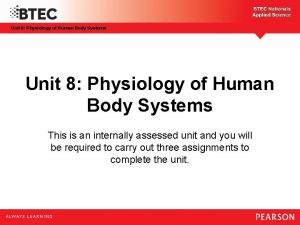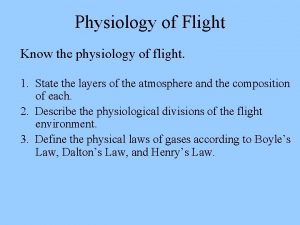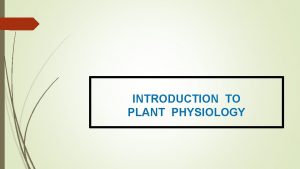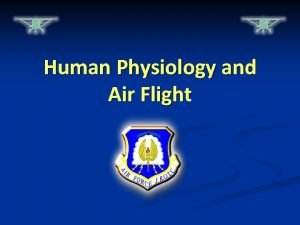Introduction to Human Factors and Flight Physiology Human
















- Slides: 16

Introduction to Human Factors and Flight Physiology

Human Factors Regardless of technology advancements, today’s aircraft still require human input and decision making at some level.

Human Factors Pilots and flight crews provide the human flight component Flight Physiology How the body and mind work in the flying environment Reality Vs. Myth

Human Factors More than 70% of aviation accidents and incidents are related to human factors No accident occurs without a series of incidents happening beforehand NTSB Accident Database

The SHEL Model S = Software H = Hardware E = Environment L = Liveware Interrelationship between human factors and the aviation environment

Incapacitation – Liveware Failure Not able to perform at normal levels Sudden Subtle Total Partial Distraction Recognized Unrecognized

Liveware – The Human Body System Let’s examine how the human body takes in and responds to stimuli.

Endocrine System Hormones – Chemical signals that control actions of the body Adrenaline is a hormone released by the adrenal glands in times of stress

Basic Human Anatomy Central Nervous System Brain Controls physiological, mechanical, and mental functions through electrical and biochemical signals

Basic Human Anatomy Central Nervous System Spinal Cord Bundle of nerves located in the spine that allow the signals transmitted from the brain to travel to other parts of the body

Basic Human Anatomy Peripheral Nervous System Nerves deliver information to and from the central nervous system and provide feedback to control breathing, digestion, heart rate, blood pressure, etc.

Basic Human Anatomy Musculoskeletal System Skeleton – Bones Tendons – Link between bone and muscle Muscles – Pull on bone to bring about movement

Basic Human Anatomy Metabolic System Allows all body systems to work together Converts resources into substances, chemicals, and energy to support brain and body activity Liver, gallbladder, kidneys, pancreas, thyroid

Basic Human Anatomy Circulatory System Carries blood, including oxygen, carbon dioxide, nutrients, and waste Heart Pump that allows blood to flow into arteries, capillaries, and then tissue and cells

Basic Human Anatomy Vascular System Maintains an uninterrupted blood supply

Basic Human Anatomy Respiratory System Lungs Exchange oxygen and carbon dioxide into and out of the blood stream
 Chapter 1 introduction to human anatomy and physiology
Chapter 1 introduction to human anatomy and physiology Distal and proximal
Distal and proximal Iraad definition project management
Iraad definition project management Cephalic cranial
Cephalic cranial Endomysium
Endomysium Holes essential of human anatomy and physiology
Holes essential of human anatomy and physiology Chapter 2 human reproductive anatomy and physiology
Chapter 2 human reproductive anatomy and physiology Human anatomy and physiology 10th edition
Human anatomy and physiology 10th edition Unit 8: physiology of human body systems
Unit 8: physiology of human body systems Human physiology exam 1
Human physiology exam 1 Anatomy and physiology ninth edition
Anatomy and physiology ninth edition Abiotic and abiotic factors
Abiotic and abiotic factors Abiotic vs biotic factors
Abiotic vs biotic factors Aboitic environment
Aboitic environment Common factor definition
Common factor definition Common factors of 10 and 20
Common factors of 10 and 20 Common factors of 8
Common factors of 8































